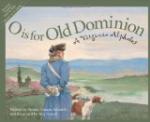Such was the colonial beauty, Evelyn Byrd, daughter of Colonel William Byrd. Though her home was not here but at Westover, and there she sleeps under her altar-tomb, yet the girlish presence seems at Brandon too, where the winsome face looks down from the wall, and where we must pause to tell her story.
This Virginia girl was educated in London where she had most of her social triumphs. There she was presented at court and there began the pitiful romance of her life in her meeting with Charles Mordaunt. In all youth’s happy heedlessness these two fell in love—the daughter of “the baron of the James” and the grandson and heir of London’s social leader, Lord Peterborough.
It seemed a pretty knot of Cupid’s tying; but just here William Byrd cast himself in the role of Fate. Some say because of religious differences, some say because of an old family feud, he refused to permit the marriage. He brought his daughter back to Virginia where, as the old records say, “refusing all offers from other gentlemen, she died of a broken heart.”
That day when we left the manor-house, we started homeward, or boatward, with our faces set the wrong way; for we wandered first into the old garden.
It is a typical colonial garden that lies down by the river—a great roomy garden where trees and fruit bushes stand among the blossoming shrubs and vines and plants. It is a garden to wander in, to sit in, to dream in. All is very quiet here and the world seems a great way off. Only the birds come to share the beauty with you, and their singing seems a part of the very peace and quiet of it all. The old-fashioned flowers are set out in the old-fashioned way. There are (or once were) the prim squares, each with its cowslip border, and the stiffly regular little hedgerows. One may hunt them all out now; but for so many generations have shrub and vine and plant lived together here, that a good deal of formality has been dispensed with, and across old lines bloom mingles with bloom.
The old garden calendars the seasons as they come and go. As an early blossom fades, a later one takes its place through all the flowery way from crocus to aster.
Trifling, cold, and unfriendly seem most gardens of to-day in comparison with these old-fashioned ones. Perhaps the entire display in the modern garden comes fresh from the florist in the spring, and is allowed to die out in the fall, to be replaced the next spring by plants not only new but even of different varieties from those of the year before. Not so at Brandon. Here, the garden is one of exclusive old families. Its flower people can trace their pedigrees back to the floral emigrants from England. The young plants that may replace some dead ones are scions of the old stock. Strange blossoms, changing every spring like dwellers in a city flat, would not be in good standing with the blue flags that great- (many times great-) grandmother planted, nor with the venerable peonies and day lilies, the lilacs and syringas that remember the day when the elms and magnolias above them were puny saplings. Even a huge pecan tree, twenty-one feet around, whose planting was recorded in the “plantation book” over a century ago, is considered rather a new-comer by the ancient family of English cowslips.




